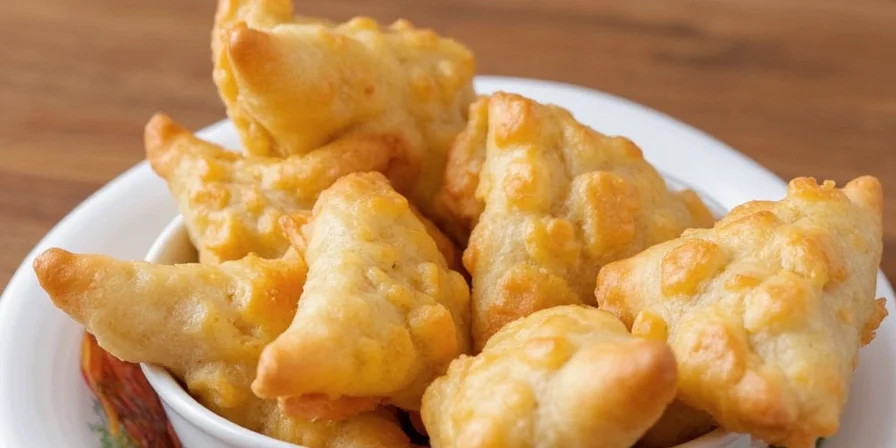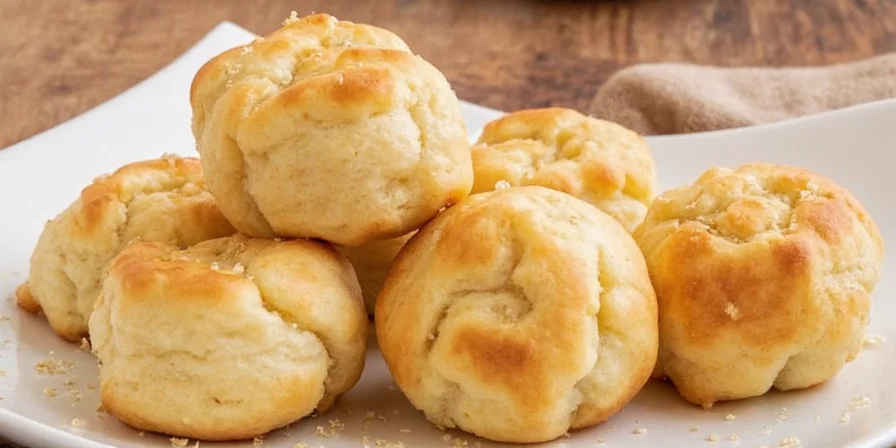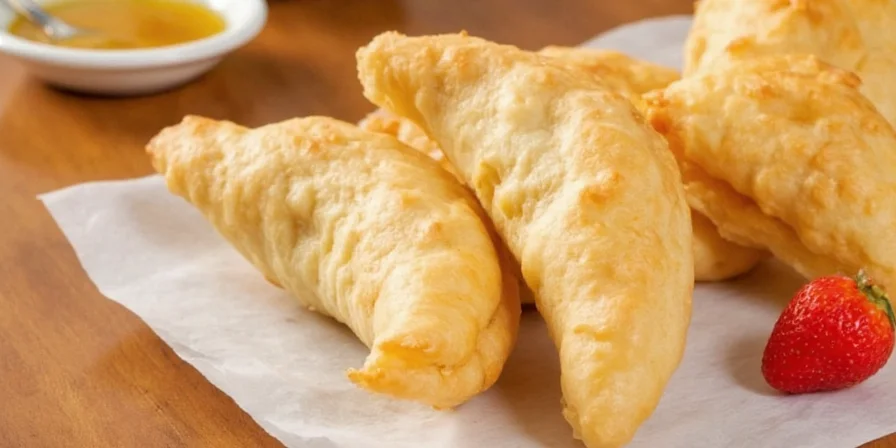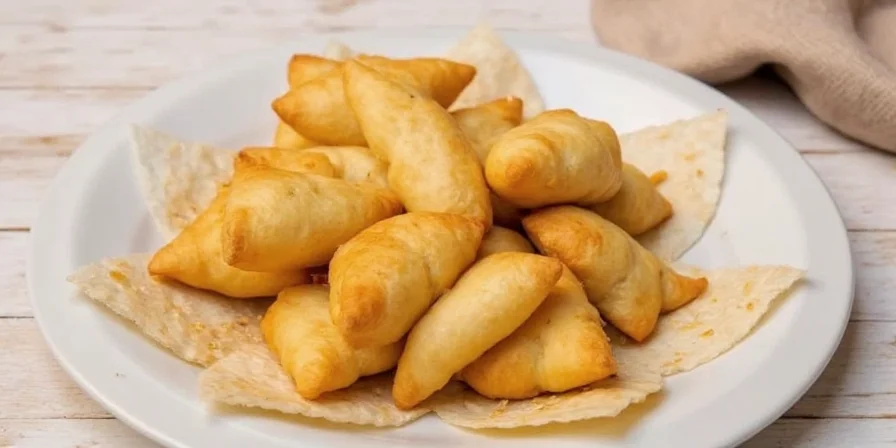Sopapillas: Sweet, Puffy, and Spiced to Perfection – A Global Spice Tradition
Table of Contents
- Introduction: What Exactly Are Sopapillas?
- A Brief History & Global Influence
- The Essential Ingredients (and Why Every One Matters)
- Step-by-Step Recipe: Mastering the Art of Puffiness
- Pro Tips for Flaky, Golden Sopapillas
- Spice It Up: Creative Flavor Twists from Around the World
- Serving Suggestions & Pairings
- Common Mistakes (and How to Avoid Them)
- Conclusion: Embrace the Joy of Sopapillas
Introduction: What Exactly Are Sopapillas?
If you've ever bitten into a warm, sugar-dusted puff of dough that practically melts in your mouth, you’ve already experienced the magic of sopapillas. These Latin American pastries are often compared to beignets or fried doughnuts but have their own unique charm — especially when kissed by just the right amount of spice.

A Brief History & Global Influence
Sopapillas trace their roots back to Spain and North Africa before crossing the Atlantic with Spanish colonizers. Today, they're a beloved comfort food across Latin America, particularly in Mexico, Chile, and New Mexico, where they’re enjoyed both as desserts and breakfast staples.
But here's the twist — while traditionally simple, the use of spices like cinnamon, anise, nutmeg, and even cacao has led to regional variations that reflect local flavor profiles and cultural exchanges.

The Essential Ingredients (and Why Every One Matters)
Making sopapillas may seem straightforward, but each ingredient plays a critical role in achieving that signature flakiness and puff:
- Flour: All-purpose is best — bread flour can make them too dense.
- Baking Powder: The secret to lift and air pockets inside.
- Salt: Balances the sweetness and enhances flavors.
- Butter (or shortening): For tenderness and richness.
- Milk: Adds moisture and helps bind the dough.
- Oil: Used for frying — choose neutral oils like vegetable or canola.
- Cinnamon & Sugar: For that irresistible finish.
| Ingredient | Quantity | Purpose |
|---|---|---|
| All-Purpose Flour | 2 cups | Base structure and texture |
| Baking Powder | 1 tsp | Leavening agent for puffiness |
| Salt | ½ tsp | Enhances flavor |
| Butter (cold, cubed) | ¼ cup | Tenderness and richness |
| Milk | ¾ cup | Dough binder and moisture |
Step-by-Step Recipe: Mastering the Art of Puffiness
- Mix Dry Ingredients: In a large bowl, whisk together flour, baking powder, and salt.
- Cut in Fat: Add cold butter cubes and use a pastry cutter or your fingers to blend until mixture resembles coarse crumbs.
- Add Milk: Gradually stir in milk until dough comes together. Knead lightly on a floured surface.
- Rest the Dough: Let it rest for at least 30 minutes (refrigeration helps with handling).
- Roll Out: Roll out to about ¼-inch thickness.
- Cut Into Shapes: Use a knife or pizza cutter to cut into squares or triangles.
- Fry Until Golden: Heat oil to 360°F (180°C). Fry in batches until puffed and golden, flipping once.
- Dust with Spiced Sugar: Combine 1 cup powdered sugar with 1–2 tsp ground cinnamon (adjust to taste), and sprinkle generously.

Pro Tips for Flaky, Golden Sopapillas
Making sopapillas might seem simple, but getting that ideal puff and crispness requires attention to detail. Here’s how the pros do it:
- Cold Butter = Better Layers: Just like pie crusts, keeping the fat cold creates steam pockets for flakiness.
- Don’t Overwork the Dough: Too much kneading will result in tough, bready sopapillas.
- Let the Dough Rest: This allows gluten to relax, preventing shrinkage when rolled out.
- Oil Temperature Is Key: Too hot = burned outside, raw inside. Too cool = oily, heavy results. Use a thermometer!
- Drain Well: Place on paper towels after frying to absorb excess oil.
Spice It Up: Creative Flavor Twists from Around the World
While traditional cinnamon-sugar sopapillas are divine, don’t be afraid to play with spices! Here are some globally inspired ideas:
| Region | Spice Combination | Flavor Profile |
|---|---|---|
| Mexico | Cinnamon + Orange Zest | Warm, citrusy, classic |
| North Africa | Nutmeg + Cardamom + Rosewater | Elegant, floral, aromatic |
| India | Cardamom + Clove + Jaggery | Deeply spiced with rich sweetness |
| New Mexico | Chili Powder + Brown Sugar | Smoky and sweet with a kick |
| Europe (Fusion) | Anise + Vanilla + Lemon | Retro charm with a bakery vibe |

Serving Suggestions & Pairings
Sopapillas are best served fresh and hot, preferably with a dollop of something creamy or a drizzle of sauce. Try these combinations:
- Classic: Cinnamon-sugar + chocolate dipping sauce
- Luxury: Mascarpone cream + honey + pistachio
- Exotic: Rosewater yogurt + dried rose petals
- Brunch Ready: Maple syrup + bacon crumbles
- Decadent: Dulce de leche + sea salt

Common Mistakes (and How to Avoid Them)
Even seasoned cooks can stumble when making sopapillas. Here’s what not to do:
- Overmixing the dough: Leads to tough pastries. Mix until just combined.
- Using old baking powder: Fresh leavening agents are essential for puff.
- Skimping on resting time: Dough needs to relax for easier rolling.
- Frying at the wrong temperature: Invest in a thermometer for consistent results.
- Dusting with regular sugar: Powdered sugar sticks better than granulated.
Conclusion: Embrace the Joy of Sopapillas
Sopapillas aren’t just a treat — they’re a celebration of texture, warmth, and heritage. With the right mix of technique and spices, you can turn this humble dough into a dazzling centerpiece for any gathering.
Whether you stick with tradition or go wild with global spices, remember: sopapillas are meant to be shared, savored, and enjoyed with a smile. So roll up your sleeves, fire up the fryer, and let the aromas of cinnamon, cardamom, and nostalgia fill your kitchen.












 浙公网安备
33010002000092号
浙公网安备
33010002000092号 浙B2-20120091-4
浙B2-20120091-4